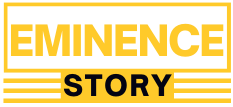Artificial intelligence (AI) has become synonymous with complex algorithms and machine learning. While these are the cornerstones of AI, its applications are rapidly expanding beyond just data analysis and automation. One of the most exciting frontiers is the exploration of AI’s creative potential.
Gone are the days of AI solely replicating existing creative works. Today, AI systems are being designed to generate entirely original content, pushing the boundaries of human imagination. Here are a few examples:
- Music Composition: AI algorithms can analyze vast amounts of musical data to create unique compositions in various styles. Imagine an AI that can collaborate with a human musician, composing a melody while the musician adds the emotional touch.
- Art Generation: AI can produce stunning visuals, from photorealistic landscapes to abstract paintings. This opens doors for new art forms and allows artists to experiment with AI as a tool to create unique pieces.
- Storytelling: AI can craft narratives, poems, and even scripts. While the content might not win a Pulitzer Prize yet, it can spark ideas and provide a starting point for human writers.
- Product Design: AI can assist in product design by generating various iterations based on specific criteria. This can streamline the design process and lead to innovative product concepts.
The potential benefits of AI-driven creativity are vast. It can democratize creative expression by making it more accessible to everyone. AI can also break creative roadblocks and help overcome limitations by generating unexpected ideas.
However, there are also concerns to address. Can AI truly be creative, or is it just mimicking existing patterns? Who owns the copyright of AI-generated creations? As AI’s creative capabilities continue to evolve, these are important questions that society needs to grapple with.
Overall, the rise of AI creativity presents a fascinating opportunity. By embracing this technology and fostering human-AI collaboration, we can unlock new avenues for artistic expression and innovation.

